The Future of Clinical Service Provider-Sponsor Relationships
The author analyzes the results of a survey that polled pharmaceutical executives and managers about both sides of the outsourcing relationship. Read this and other preferred organization articles in this special issue.
This article is part of a special issue on Preferred Providers.
Each year, the Avoca Group, a consulting firm focused on the pharmaceutical industry, surveys industry executives and managers from around the world to understand trends in the outsourcing of clinical research by pharmaceutical companies and other sponsors. In 2010, Avoca explored respondents' views of the future of outsourcing relationships, posing questions about how pressure to achieve increased quality and efficiency will affect outsourcing strategies, vendor-selection priorities, preferred-provider relationships, and the need for formal measurement and management of vendor performance and relationship quality.
A clear theme in the results of the Avoca Group's 2009 industry survey was the need to achieve an enhanced level of efficiency in clinical outsourcing (1). More than 92% of each of sponsor and service provider respondents felt that the 2009 levels of efficiency in these relationships were not adequate to meet future needs. Avoca's data also suggest that sponsors are increasingly dissatisfied with the performance of their outsourcing relationships. Satisfaction with the performance of clinical service providers declined steadily from 71% in 2008 to 62% in 2010. In 2010, only 42% of sponsors were satisfied with the value they received for their outsourcing spend. Providers, too, have experienced declining satisfaction with their relationships with sponsors; 87% were satisfied in 2008, and only 74% were satisfied in 2010.
Despite sponsors' declining satisfaction with providers, it is unlikely that the level of clinical research outsourcing will decrease in the near future. To the contrary, all indicators suggest that the level of outsourcing will remain stable or even increase (2). Suboptimal satisfaction with current outsourcing relationships, coupled with the need to continue or expand such relationships, is thus forcing sponsors and providers to devise innovative ways of working together that are more mutually satisfactory.
This report will reveal the directions that sponsors and providers are taking in this endeavor, explore the obstacles to companies' successful implementation of new approaches, and investigate whether early adopters of current trends are indeed enjoying increased satisfaction with the quality and value of their clinical outsourcing relationships.
Methodology and participants
Avoca created two unique survey instruments, one for pharmaceutical companies and other clinical-research sponsors, and a second for contract research organizations (CROs) and other providers of clinical research services. The survey instruments included yes–no questions, multiple-choice questions, and free-text response areas. Participants were offered an executive summary of the survey results for their participation in the survey.
Avoca collected 109 sponsor surveys from 74 companies and 174 service-provider surveys from 88 companies during a two-month period. Seventy-two percent of sponsor respondents were employed by pharmaceutical companies, 22% by biotechnology companies, and 6% by other sponsor companies. Forty-eight percent reported that they were employed by top 20 companies in terms of revenue. Seventy percent of respondents were executive and middle-management personnel, and the remainder held project-management or other similar-level positions.
Of the provider respondents surveyed, 71% were employed by full-service CROs, 11% by niche service providers, 9% by central laboratories, and the remainder by other types of providers. Fifty-nine percent reported that their companies were in the top 20 in their industry in terms of revenue. Seventy-nine percent of clinical service-provider respondents were executive or middle-management personnel, 15% were project managers, and the remainder held other roles.
Results
Planned changes to outsourcing practices. When asked about the changes their companies anticipated making during the next five years to address the need for increased outsourcing efficiency, sponsors' responses fell into a few major categories (see Figure 1). First, the majority intended to consolidate more outsourced work within preferred-provider relationships, and most of these respondents also planned to reduce the total number of suppliers they used. Second, most respondents planned to improve the ways that they measured, shared information about, and managed the performance of their providers and the quality of their outsourcing relationships. Third, most respondents planned to use improved criteria for provider selection. Finally, several respondents planned to change their outsourcing models or to incorporate more risk-sharing clauses into their future contracts.
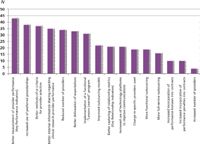
Figure 1: Sponsor companies described changes that they are making to improve the efficiency of their outsourcing relationships (74 companies reporting). (ALL FIGURES ARE COURTESY OF THE AUTHOR)
Providers reported the intention to make changes of a similar nature (see Figure 2). As was the case for sponsors, the majority of respondents planned to strive for long-term relationships, with an increased focus on repeat customers and preferred-provider relationships. Also like sponsors, most providers planned to focus increasingly on relationship-management programs (including customer feedback programs and performance measurement), and improved models for sharing information about outsourcing relationships.

Figure 2: Provider companies described changes that they are making to improve the efficiency of their work with sponsors (88 companies reporting).
The following sections will describe the detailed data that were obtained about several of these major trends.
Consolidation of outsourcing relationships. As described, the majority of sponsors intended to consolidate more outsourced work within preferred-provider relationships. At the time of the survey, 69% of the sponsor companies represented reported having preferred-provider relationships, including 97% of the top 20 companies and 49% of other companies.

Figure 3a: Approximate percentages of companies' clinical research outsourcing spend that went to preferred providers in 2009.
Within the group that engaged preferred providers, the extent to which outsourcing spending was allocated to preferred versus other providers varied widely. Forty-two percent of sponsor representatives stated that more than three-quarters of their clinical-research outsourcing spending went to preferred providers, while 36% reported this fraction to be less than half (see Figure 3). Seventy percent of respondents stated that the percentage of outsourcing spending allocated to preferred providers had increased since 2007.

Figure 3b: Changes in clinical research outsourcing spend on preferred providers between 2007 and the present.
The data were examined to determine whether a relationship existed between a great fraction of outsourcing spending allocated to preferred providers and a high level of satisfaction with the work performed or the value received (see Figure 4). Sponsor respondents whose companies allocated 75% or more of their clinical-outsourcing budgets to preferred providers were about as likely to be satisfied with the work performed as were respondents whose companies allocated less to preferred providers, and were more likely to be satisfied than were companies without preferred providers. However, respondents whose companies allocated 75% or more of their clinical-outsourcing budgets to preferred providers were less likely to be dissatisfied with clinical service providers' performance than were those that allocated less.
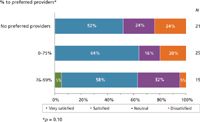
Figure 4: Sponsors' levels of satisfaction with the work that clinical service providers have done.
Differences between the groups were more pronounced when the value received for the money spent on clinical service providers was examined. Figure 5 shows that respondents from companies without preferred providers were far less likely to be satisfied with the value received than were respondents from companies with preferred providers, and the fraction that was satisfied increased with increased allocation of spending to these relationships. Likewise, only 5% of respondents from companies that allocated 75% or more of their clinical-outsourcing spending to preferred providers were dissatisfied with the value obtained, whereas 33% of those from companies without preferred providers were dissatisfied.
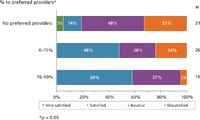
Figure 5: Sponsors' levels of satisfaction with the value received for the money spent on clinical service providers.
Altered expectations of preferred providers. In keeping with their need for efficient, high-performing outsourcing relationships, sponsors as a group anticipate increasing their demands on the providers they choose for preferred relationships, to the point where these relationships come to resemble what are commonly referred to in the industry as partnerships. In the survey, sponsor respondents were provided with a list of items and asked to indicate whether they always expected, sometimes expected, or did not expect each one of preferred providers. They were asked first to reflect on their expectations in the immediate past (i.e., 2007–2009), and then to reflect on their expectations moving forward (i.e., 2010 and beyond). Figure 6 shows that, between 2007 and 2009, discounted rates was the only item that was always expected of preferred providers by the majority of respondents. Increased oversight by providers' senior management ranked second, and access to specific staff members ranked third. The remainder of the items listed were always expected by less than a quarter of respondents and were not expected by a quarter or more.
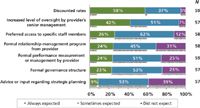
Figure 6: What sponsor companies expected of their preferred providers in the recent past (2007â2009).
For 2010 and beyond, however, expectations of preferred providers changed considerably (see Figure 7). Except for advice or input regarding strategic planning, all items listed were always expected by at least half of sponsor respondents, and were not expected by 13% or less.
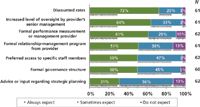
Figure 7: What sponsor companies expect from their preferred providers in 2010 and beyond.
In the clinical service-provider surveys, respondents were presented with the same list presented in the sponsor surveys and asked about their perceptions of what sponsors always expected, sometimes expected, or did not expect of their preferred-provider relationships in the recent past (i.e., 2007–2009) and present or future (i.e., 2010 and beyond). Most providers said that, in the recent past, discounted rates were always expected, but all other items were expected only sometimes. Thirty-one percent of provider respondents felt that formal relationship-management programs were not expected by sponsors at all.
For 2010 and beyond, providers as a group seemed to recognize sponsors' changing expectations of their preferred relationships (see Figure 8). Most recognized formal performance measurement and management to have become always expected, and the increased importance of formal governance and formal relationship management was also recognized. The percentage of respondents that felt that relationship-management programs were generally not expected declined from 31% to 12%.
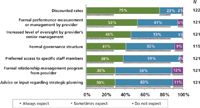
Figure 8: What service providers believe that sponsors expect from their preferred providers in 2010 and beyond.
Formal relationship-measurement and -management programs. At the time of the survey, 54% of sponsor companies reported that they had formal relationship-management programs in place with at least some of their suppliers, and 66% of providers reported that they had such programs in place with at least some of their clients. Components of relationship-management programs most commonly included performance-metric assessment and review, lessons-learned meetings, issue-handling procedures, and formal governance structures. Less commonly employed were systematic ways of gathering relationship metrics from internal and partner staff.
Of the sponsor respondents that had experience with relationship-management programs, 68% reported that these experiences had been primarily positive, and an additional 30% reported that they had been a mix of positive and negative. Similarly, 60% of provider respondents reported having had primarily positive experiences, and an additional 31% reported a mix of positive and negative. Thus, given the considerable level of exposure to such programs and the largely positive experiences, the increasing demand by sponsors for formal relationship-management programs in the future is not surprising.
In Avoca's sample of sponsors, formal relationship-management programs were associated with a higher rate of satisfaction and lower rate of dissatisfaction with the work provided by clinical service providers. This relationship was stronger when sponsors were sorted according to whether, as part of their relationship-management programs, they employed an adequate set of key peformance indicators to evaluate the performance of service providers (see Figure 9). Although the numbers were small, sponsors that also employed adequate Key Relationship Indicators appeared to enjoy even greater benefits.
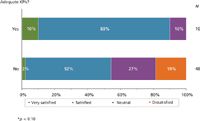
Figure 9: Sponsors' satisfaction with the work performed by clinical service providers, by whether or not an adequate set of key performance indicators (KPIs) is employed.
Challenges of change. The fact that a company intends to change its outsourcing strategies or tactics does not necessarily mean that the desired changes will be implemented successfully. One objective of this year's industry survey was to explore how the industry was faring with respect to elements of change management such as internal corporate communications about changes in outsourcing strategy and tactics, and attitudes towards changing role definitions.
With respect to internal communications, slightly more than half of sponsor respondents reported that their companies did a good job of communicating changes to staff, though less than half felt that these communications were supported with good training. Provider respondents felt more positively about communications within their organizations than did sponsor respondents, but again, support with training appeared to be the weakest link.
Implicit in most changes designed to improve outsourcing efficiency is the assumption that internal resources will be spared, which, in principle, entails changes in the daily work of the sponsors' clinical-trial managers or other personnel that oversee CROs. However, when asked whether they saw the role of the sponsor's clinical-trial manager changing in the context of a trusting, strategic outsourcing relationship, only 40% of sponsor respondents and 33% of provider respondents said yes.
Responses to the question of whether the role of the sponsor's clinical-trial manager should change in a strategic relationship varied considerably according to the nature of the respondent's position within his or her corporate structure. Among sponsors, while the majority of clinical or operations personnel felt that the role of the clinical-trial manager should not change materially, approximately two-thirds of each of outsourcing and management personnel said that it should change. Similarly, among providers, executive managers were nearly twice as likely as middle managers, and nearly 10 times as likely as project managers, to say that the role of the sponsor's clinical-trial manager should change.
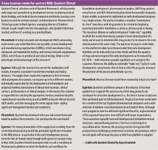
A new business model for contract R&D: Quotient Clinical
Conclusion
The results of the 2010 Avoca industry survey illustrate widespread recognition of the need for efficient and high-performing outsourcing practices in the clinical drug-development industry. Feedback provided in this survey suggests that both sponsor and clinical service provider companies currently are making, or intend soon to make, wide-ranging changes in the way they conduct their outsourcing business. Among the changes planned or underway, major themes that emerged include the consolidation of outsourcing activities within long-term preferred-provider relationships, higher expectations of these relationships, and increased investment in formal measurement and management of performance and relationship quality.
The potential benefits associated with such changes in approach appear to be appreciated by sponsors and clinical service providers alike, and based on the data collected, each of these changes appears already to be underway within the industry. Both direct reports from respondents about their experiences, and associations in the data between the use of these approaches and increased satisfaction with provider performance and value, suggest that these approaches, when implemented in a high-quality manner, do in fact yield greater outsourcing quality, value, and overall relationship satisfaction.
Denise Calaprice-Whitty, PhD, is executive director of survey research at the Avoca Group, 179 Nassau St., Suite 3A, Princeton, NJ 08542, tel. 909.337.2848, denise.calaprice-whitty@theavocagroup.com.
Reference
1. Avoca Group, "The 2009 Avoca Report: Trends in Clinical Outsourcing" (Princeton, NJ, 2009)
2. Avoca Group, "The 2010 Avoca Report: Trends in Clinical Outsourcing" (Princeton, NJ, 2010)
Pharmaceutical Tariffs Are Imminent: How Industry is Bracing for Impact
April 16th 2025On April 14, 2025, the Trump Administration launched a national security-driven investigation into pharmaceuticals, a move that will likely result in tariffs being placed on pharmaceutical drugs, ingredients, and other components that are imported from outside of the United States.
Drug Solutions Podcast: A Closer Look at mRNA in Oncology and Vaccines
April 30th 2024In this episode fo the Drug Solutions Podcast, etherna’s vice-president of Technology and Innovation, Stefaan De Koker, discusses the merits and challenges of using mRNA as the foundation for therapeutics in oncology as well as for vaccines.
